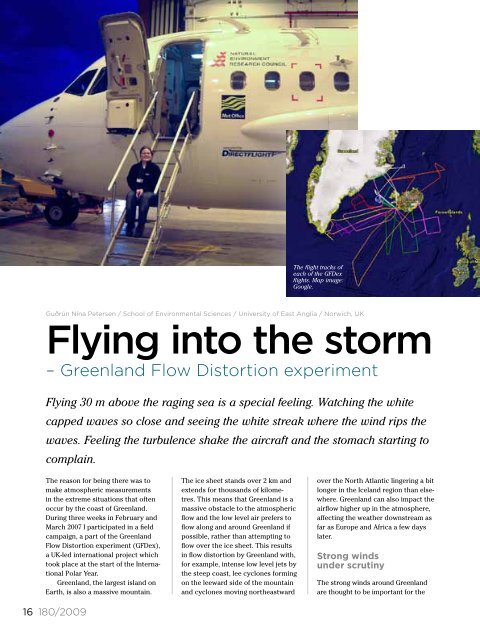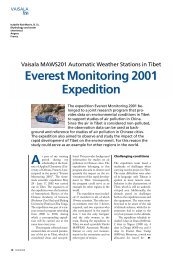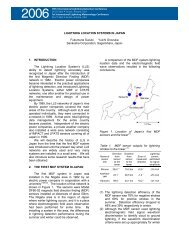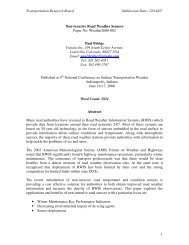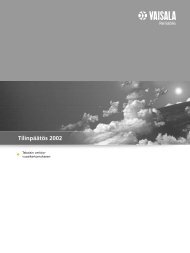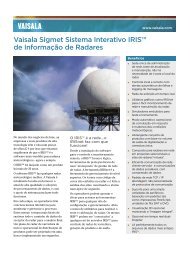Vaisala News 180 - Full Magazine
Vaisala News 180 - Full Magazine
Vaisala News 180 - Full Magazine
You also want an ePaper? Increase the reach of your titles
YUMPU automatically turns print PDFs into web optimized ePapers that Google loves.
Flying 30 m above the raging sea is a special feeling. Watching the white<br />
capped waves so close and seeing the white streak where the wind rips the<br />
waves. Feeling the turbulence shake the aircraft and the stomach starting to<br />
complain.<br />
The reason for being there was to<br />
make atmospheric measurements<br />
in the extreme situations that often<br />
occur by the coast of Greenland.<br />
During three weeks in February and<br />
March 2007 I participated in a field<br />
campaign, a part of the Greenland<br />
Flow Distortion experiment (GFDex),<br />
a UK-led international project which<br />
took place at the start of the International<br />
Polar Year.<br />
Greenland, the largest island on<br />
Earth, is also a massive mountain.<br />
The ice sheet stands over 2 km and<br />
extends for thousands of kilometres.<br />
This means that Greenland is a<br />
massive obstacle to the atmospheric<br />
flow and the low level air prefers to<br />
flow along and around Greenland if<br />
possible, rather than attempting to<br />
flow over the ice sheet. This results<br />
in flow distortion by Greenland with,<br />
for example, intense low level jets by<br />
the steep coast, lee cyclones forming<br />
on the leeward side of the mountain<br />
and cyclones moving northeastward<br />
The flight tracks of<br />
each of the GFDex<br />
flights. Map image:<br />
Google.<br />
Guðrún Nína Petersen / School of Environmental Sciences / University of East Anglia / Norwich, UK<br />
Flying into the storm<br />
– Greenland Flow Distortion experiment<br />
16 <strong>180</strong>/2009<br />
over the North Atlantic lingering a bit<br />
longer in the Iceland region than elsewhere.<br />
Greenland can also impact the<br />
airflow higher up in the atmosphere,<br />
affecting the weather downstream as<br />
far as Europe and Africa a few days<br />
later.<br />
Strong winds<br />
under scrutiny<br />
The strong winds around Greenland<br />
are thought to be important for the


